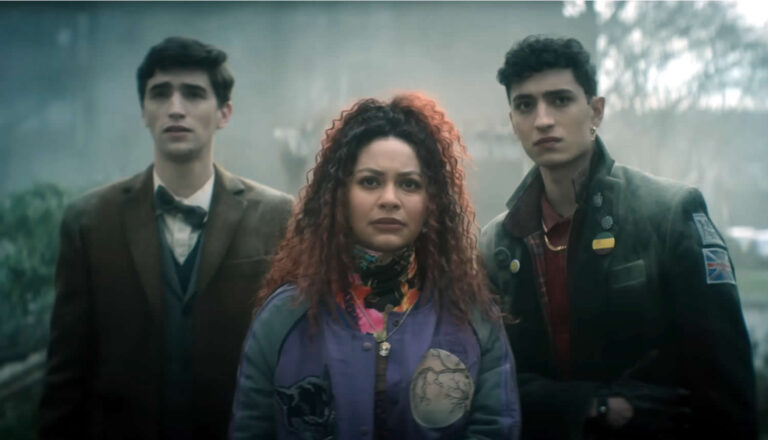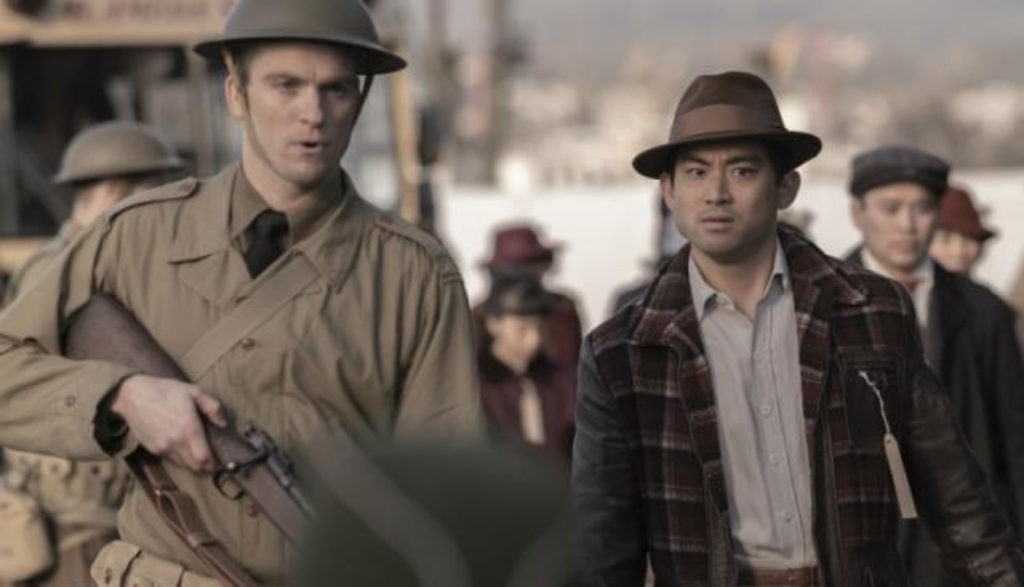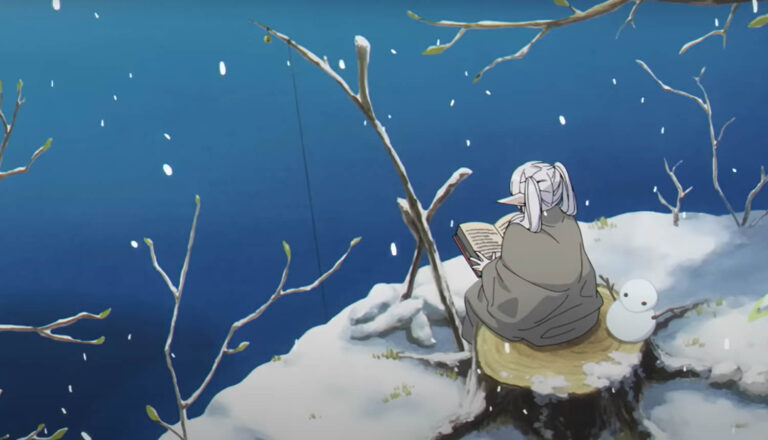
Dead Boy Detectives
Dead Boy Detectives targets teens in style and story. But it comes with very adult, problematic content.

Here, there be monsters. But monsters come in many forms.
The Terror is a multitasking title, referring sometimes to the monsters that stalk its characters and at others to the emotion said characters feel—and sometimes trigger. But it also aims to inspire terror among its viewers.
Much like its network counterpart The Walking Dead, The Terror doesn’t just explore the fear of monsters, but rather the monsters that humans become when faced with that fear. Like FX’s American Horror Story, the stories it uses to explore this fear change with each passing season. And unfortunately, much like the history it’s based on, there are few heroes or happy endings.
Season 2 of The Terror, subtitled Infamy, follows the story of Chester Nakayama, the American-born son of Japanese immigrants living in California in 1941.
After Masayo Furuya, the wife of the town drunk, commits suicide, members of the Japanese community speculate whether she did it to escape domestic abuse or whether an angry spirit from their homeland is involved. But Chester knows it’s more than that: He asked the now-dead woman to make an herbal concoction for his pregnant girlfriend, Luz, so they could terminate the pregnancy. The guilt Masayo felt, Chester believes, was too much for her to bear.
While Chester wrestles with the guilt of what happened to Masayo, he also begins to wonder if there really could be spirits involved. First, he’s been having hallucinations since Masayo’s funeral. Then there’s Mr. Furuya, her abusive husband, who’s somehow blinded by the sun. And finally, there’s Yuko, the creepily mysterious Japanese prostitute who reads Chester’s fortune.
“You are a sparrow in a swallow’s nest,” says Yuko. She tells him that he is living in two worlds but is at home in neither, referring to his desire to be a normal American citizen without disrespecting his traditional Japanese family.
But before Chester can really contemplate what this prediction means, Japan bombs Pearl Harbor and his entire community is forced into an internment camp. If he wants to help his community survive, he’ll have to solvethe mystery of the spirit haunting them and prove himself an American patriot.
This semi-historical horror drama brings history to light with a supernatural twist. It plays on the fear of the unknown while also giving us a glimpse into what terrible acts humans commit against each other when danger looms.
But while The Terror wants to put a bit of prestige sheen on the tried-and-tired monster yarn, the content we can see is the real beast, here. The camera rarely looks away from the horrors of this semi-historical drama. In Season 1, red blood rained down on the Arctic’s white snow with frequency, sometimes accompanied with bits of muscle and organs and brain. And Season 2 doesn’t seem to be much better, featuring everything from suicide and abortion to domestic abuse and internment camps—and that’s just in the first episode.
Although The Terror isn’t a gratuitous gore-fest, staggering aimlessly on for season after season (I’m looking at you, Walking Dead), it can often feel more real and terrifying given the historical aspects. Indeed, George Takei was brought on to the Season 2 production as a consultant for the Japanese internment camps since he spent three years in one as a boy. Dealing with real-life horrors of the past and present while adding in a supernatural twist certainly makes The Terror a fitting name.
After the suicide of a beloved community member, bad things start happening in Chester’s hometown—supposedly the works of an angry Japanese spirit. As he speculates on whether this could be true, Chester tries to build a future with girlfriend Luz while also remaining respectful of his traditional Japanese parents.
A woman in traditional Japanese garb walks on a boardwalk, her body unnaturally cracking the whole time as though possessed. She kneels and uses one of her Kanzashi (Japanese hair sticks) to slowly stab herself through her ear. Another woman (who may or may not be a spirit) cracks her body in the same way and peels a portion of her skin off while removing makeup. We see her take a needle and sew the skin back together.
Chester is seemingly affected by a spirit when he pulls a thread from his jacket and hallucinates that the string is unravelling his skin instead. He later sees a dead woman’s body, which vanishes immediately. When developing pictures, he notices a strange blur over the faces of certain people (probable spirits). There are mentions of “bad omens,” “old spirits,” and bakemono (Japanese monsters).
Other supernatural events include a man being blinded by the sun after passing a spirit and a drunk man being blown into the ocean by a sudden gust of wind. His waterlogged body is found the next day. A woman tries to purify a house using salts and chanting. Another woman offers to read Chester’s fortune using tea leaves. An alcoholic man is known to have beaten his wife when drunk. Men smoke and drink alcohol (sometimes to excess).
Chester and Luz are seen in bed after having sex, discussing how her father wanted her to be a nun and premarital sex is an “offense to God.” Later, after discovering Luz is pregnant, Chester asks her to take an herbal concoction to cause the baby to die. Chester attends a bachelor party at a brothel, where his friends wander off with women wearing 1940’s undergarments.
Several racial slurs are used between Japanese people and white Americans. Several curse words are used, including the s-word. The Lord’s name is taken in vain several times, including one use of “g–d–n.”
Lady Franklin, wife of former mission commander Capt. John Franklin, implores others to give financially to support a rescue mission. Mr. Hickey, with his band of seamen, has split from Captain Crozier and intends to take Crozier captive and kill all those who have united with him. The men find the Northwest Passage. Lady Silence discusses details about Tuumbaq.
Crozier poisons Fitzjames (per his request) so that he may die in less pain. Hickey asks Goodsir to dismember a man he’s just stabbed and killed, so that his crew may eat him (cannibalism). Goodsir does so after being threatened himself and, in a graphic scene, Hickey eats the body while the others find it difficult to stomach. Other members of Hickey’s crew plan a mutiny and consider killing him. We see mangled limbs, a skull and face cracked open as blood pours forth. Bodies line the ground and the dead are burned.
Men are seen in terrible physical condition, with gaping wounds in their chests, faces and other areas. A man eats leather in an act of desperation and realizes his teeth are falling out due to malnutrition. Someone mentions drinking wine. When discussing the Tuumbaq, the men believe it has the power to “ingest the souls of men.” Various sailors die from starvation, disease and injury. A man is shot in the chest.
The f-word is used once. God and Jesus’ name are misused once and other profanities include “h—” and “d–n.”
With Captain Crozier still in the throes of alcohol withdrawal, Commander Fitzjames is in charge of the now ice-locked expedition. He decides the time has come to prepare to leave the ships behind and walk 800 miles to safety. The trip will be incredibly dangerous, Fitzjames knows. So to boost the men’s spirits, he sponsors a carnival, coinciding with (hopefully) the first sunrise the men have seen in weeks.
The carnival goes awry, though, when one of the voyage’s doctors—perhaps insane due to unintentional lead poisoning—sets a tent alight, trapping most of the men. He then pours alcohol over his body and sets himself on fire. He dies in the immolation (we see his charred corpse), as do several others, either by the fire itself, the resulting stampede or, in one case, knife wounds suffered when the victim was wedged against the side of the tent and someone stabbed and sawed through the fabric with a blade.
Viewers see the body of another victim (who died earlier). Someone lifts a bit of cloth covering the man’s head, and we see that some of the man’s skull is gone. The brain sits there, exposed, and a man seems to stick his finger in the mass. (The camera doesn’t explicitly show the man’s prying digits, but we do hear a telltale squish.) Lady Silence cuts open a seal, apparently as an offering to the monster Tuunbaq, and the animal’s intestines spill out. Bits of meat are scattered around in a circle, and the creature appears. Later, the woman staggers into the British camp, blood covering her chin. A monkey, sick with lead poisoning, apparently batters itself to death. (We see blood in the closet where it’s been locked up.) Someone recalls going nearly crazy on another frozen journey, as well as fantasizing about burying an ax in his captain’s head. “It wasn’t sickness or hunger that mattered most to our chances,” he says. Then he points to his head. “It was what went on up here.”
During the carnival, we see men in their skivvies taking a heated bath together, and at least one person is dressed in drag. Most everyone drinks, and lots of sailors are obviously drunk. Crozier, suffering from alcohol withdrawal, says that he’s feeling like “Christ, with more nails.” He’s tended to by a sailor whose mother was addicted to laudanum. The man tells Crozier that while under the influence, his mom often forgot to feed herself or the rest of her family for days, and sometimes she “soiled herself.” He recalls spending three weeks with her as she experienced her own set of withdrawal symptoms. And when the captain asks how she did afterwards, the man refuses to say.


Paul Asay has been part of the Plugged In staff since 2007, watching and reviewing roughly 15 quintillion movies and television shows. He’s written for a number of other publications, too, including Time, The Washington Post and Christianity Today. The author of several books, Paul loves to find spirituality in unexpected places, including popular entertainment, and he loves all things superhero. His vices include James Bond films, Mountain Dew and terrible B-grade movies. He’s married, has two children and a neurotic dog, runs marathons on occasion and hopes to someday own his own tuxedo. Feel free to follow him on Twitter @AsayPaul.

Emily studied film and writing when she was in college. And when she isn’t being way too competitive while playing board games, she enjoys food, sleep, and geeking out with her husband indulging in their “nerdoms,” which is the collective fan cultures of everything they love, such as Star Wars, Star Trek, Stargate and Lord of the Rings.

Kristin Smith joined the Plugged In team in 2017. Formerly a Spanish and English teacher, Kristin loves reading literature and eating authentic Mexican tacos. She and her husband, Eddy, love raising their children Judah and Selah. Kristin also has a deep affection for coffee, music, her dog (Cali) and cat (Aslan).

Dead Boy Detectives targets teens in style and story. But it comes with very adult, problematic content.

An elf mage contemplates on connection and regret as she watches her human friends grow old and pass away.